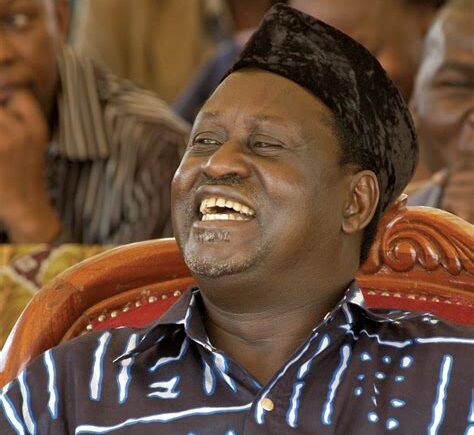The Five Campaigns for Presidency
Five times Raila Odinga sought the presidency of Kenya – in 1997, 2007, 2013, 2017, and 2022. Five times, he believed he had won the hearts and votes of the people, only to see victory slip away. Yet with each disappointment, he remained steadfast. His campaigns were not merely about personal ambition; they were movements for testing the system, social justice, economic empowerment, and the rights of the marginalized.
2017: Another Stolen Election and a Historic Court Victory
The 2017 presidential election began with hope and ended with another painful chapter in Raila’s quest for the presidency. Running under NASA (National Super Alliance) against incumbent President Uhuru Kenyatta, Raila led a spirited campaign promising economic reforms and an end to corruption.
But just days before the August 8, 2017 election, tragedy struck. On July 28, Chris Msando, the Independent Electoral and Boundaries Commission (IEBC) acting ICT director, was last seen after a television interview. The next day, July 29, his body was discovered in Muguga Forest in Kikuyu, Kiambu County, alongside that of a 21-year-old woman named Carol Ngumbu.
The scene was horrifying. Both bodies were naked and showed signs of extensive torture. Msando had visible injuries on the back and left side of his head, on his belly, cut wounds on both hands, a broken right forearm, and multiple injuries on his neck. The autopsy revealed he died from strangulation. IEBC chairman Wafula Chebukati confirmed what everyone suspected: “There is no doubt that Chris was tortured and murdered.”
The timing was devastating. Msando was one of a handful of officials who had the electoral commission’s computer system passwords and knew the exact location of the servers. His death was confirmed less than an hour before he was scheduled to oversee the test run of the live results transmission system. Former IEBC commissioner Roselyn Akombe would later claim that Msando was “led to the slaughterhouse” by some of his colleagues at IEBC, suggesting it was an inside job to compromise the electronic transmission system that Raila’s team was counting on for transparency.
When the election took place on August 8, 2017, the IEBC announced on August 11 that Kenyatta had won with 54.3% against Raila’s 44.7%. But Raila and NASA immediately cried foul, alleging that the results had been hacked and manipulated, precisely what Msando’s murder had made possible by compromising the electronic transmission system.
This time, however, something unprecedented happened.
On September 1, 2017, Kenya’s Supreme Court delivered a historic ruling. By a vote of 4-2, the court annulled the presidential election results, the first time in African history that a court had nullified the re-election of an incumbent president. The court found that there were “irregularities and illegalities” in the transmission of results from polling stations that “affected the integrity of the election.” Chief Justice David Maraga declared that the election had not been “conducted in accordance with the Constitution.”
For Raila Odinga, it was a moment of profound vindication. He had been right – the election was flawed.
International observers who had initially endorsed the results were proven wrong. The judiciary had stood up to presidential power and delivered justice.
Kenya erupted in celebration, particularly in opposition strongholds. In Kibera and Kisumu, Raila’s supporters danced in the streets. It was a proud moment for Kenya’s democracy, proof that institutions could hold power accountable.
The court ordered fresh elections within 60 days. But the victory was short-lived.
As preparations began for the repeat election scheduled for October 26, 2017, it became clear that IEBC had no intention of implementing the reforms necessary to ensure a credible process. Key personnel remained in place. The electronic transmission system – compromised by Msando’s murder – was not adequately secured. Raila’s demands for transparency were ignored.
On October 10, 2017, Raila made a painful decision: he withdrew from the repeat election. He explained that participating in a sham process would legitimize a fraudulent system. It was a principled stand, but it came at a cost. On October 26, the election proceeded with Raila’s name still on the ballot. Kenyatta was declared the winner with 98% of the vote in an election marred by extremely low turnout – many Kenyans, particularly in opposition areas, boycotted.
When Raila challenged this second election at the Supreme Court, the court, now clearly under pressure, unanimously ruled that the petition had no merit and upheld Kenyatta’s victory. Two of the judges who had annulled the August election, including Deputy Chief Justice Philomena Mwilu, mysteriously changed their stance. Justice Jackton Ojwang, who had dissented in the first ruling, seemed vindicated.
The 2017 election left Raila and millions of Kenyans feeling betrayed once again. The Supreme Court had given them hope in September, only to crush it in November. The system had stolen another election from Raila.
Published by the Luo National Congress
October 17, 2025


One Response
Raila Odinga: He spent his entire life fighting to anchor fidelity to constitutionalism, and mainstreaming of institutional integrity in public management. He may have failed in his desire to influence changes he had advocated for from the highest perch, the Presidency, but his efforts and steely resolve has permanently defined, and illuminated the route Kenya must tread into the future.